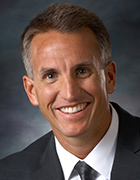You are here
Commentary: K-12 education in Oregon analogous to boiling frog?
Is the state of K-12 education in Oregon analogous to the boiling frog? The premise of the anecdote is that if a frog is placed in boiling water, it will jump out. However if it is placed in cold water that is slowly heated, its body temperature adjusting to its surroundings, it will not notice and will be cooked to death.
My question is fair. Draconian reductions in educational funding have been a statewide mainstay for the past 20 years. It’s quite common for school districts to eliminate days in the school calendar. We are forced to cut teaching positions, which lead to increased class sizes. Valued programs such as music, PE, elective courses, sports and career technical education pathways are reduced or eradicated to meet budgetary constraints. These reductions affect every student and staff member, eroding the quality of education. Truly, it seems school cutbacks have simply become part of our identity in Oregon.
In terms of our financial structures to support schools in Oregon and our overall statewide results, Oregon is close to the bottom of the barrel in these key statistics:
- Oregon students have the second highest class sizes in the nation.
- Oregon students spend one year less in school than the national average in first through twelfth grade.
- Oregon is 46th in the nation in taxable resources going to K-12 education.
- Oregon’s 2013 on-time graduation rate ranks 49th in the nation.
While there are many factors that contribute to educational successes and challenges, it is entirely appropriate to question whether our state financial system has a direct correlation to our current educational reality. I recognize my own bias. However, during my career in education I have observed courageous and miraculous teachers and educational leaders struggle to do so much more to meet higher academic standards with less on a yearly basis. Everybody has room for improvement, but let’s not blame our educators.
Interestingly enough, here we are amidst a growing economy and yet our current projection for our state school fund for the next biennium will potentially, once again, force many districts to make reductions. The statewide debate has centered on what it will take for districts to remain stable. School districts have declared that a funding level of $7.5 billion will in fact keep reductions at bay. Legislators are therefore debating, politicking and scraping together every last financial crumb to keep schools financially afloat. As one responsible for a yearly school district budget, I advocate for our 40,000 students and also those throughout Oregon. I too have an interest in keeping our schools above water, but our sense of stability is embarrassing and far below what kids deserve.
WE ARE HAVING THE WRONG CONVERSATION!
When polled, time and again, Oregonians list K-12 education as their number one priority. To put us on par with the rest of the nation will take $9.5 billion, $2 billion more than the current funding level. This is a discussion that we seem unwilling to have, but I argue that it’s not only time to talk about it, but to actually do something about it. I am not pointing the finger at state leadership, school district employees, and certainly not our students. As an Oregonian, I am looking in the mirror and recommending we all do the same. We need to decide whether we are willing to invest in education for the sake of our collective future. Mind you, to do so will take difficult decisions and new levels of sacrifice.
I think we can all agree we want students to graduate from high school, not some of our students, but all of them. We want students to graduate with many choices, allowing them to successfully enter the university system, a community college, a trades program, the military or transition straight to the workplace. We all want our students prepared for their future, not our past. They need to be able to navigate a world and economy that constantly evolves and therefore demands critical and creative thinking. For this to come to fruition in Oregon it will require major change. We need to transform our students’ day-to-day experience: time in school, levels of staffing, and opportunities for them to learn real-world practical skills. We will need to shift our collective mindset, strategies and engagement. It will require significant financial resources and support.
I have hope. Realistically, this legislative session may create some stability, but it won’t be the game-changing turn we need. I believe Oregon has the capacity for a paradigm shift, but only if we are willing to have the RIGHT CONVERSATION. The frog has not yet boiled, but let’s be honest, the water is getting hot.
Jeff Rose, Ed.D. - Beaverton School District
Banks - Bob Huston
Forest Grove - Yvonne Curtis
Hillsboro - Mike Scott
Jewell - Alice Hunsaker
Rainier - Michael Carter
Scappoose - Stephen Jupe
Seaside - Dr. Doug Dougherty
Sherwood - Heather Cordie
St. Helens - Mark Davalos
Tigard-Tualatin - Ernie Brown
Tillamook - Randy Schild
Vernonia - Aaron Miller
NWRESD - James Sager

